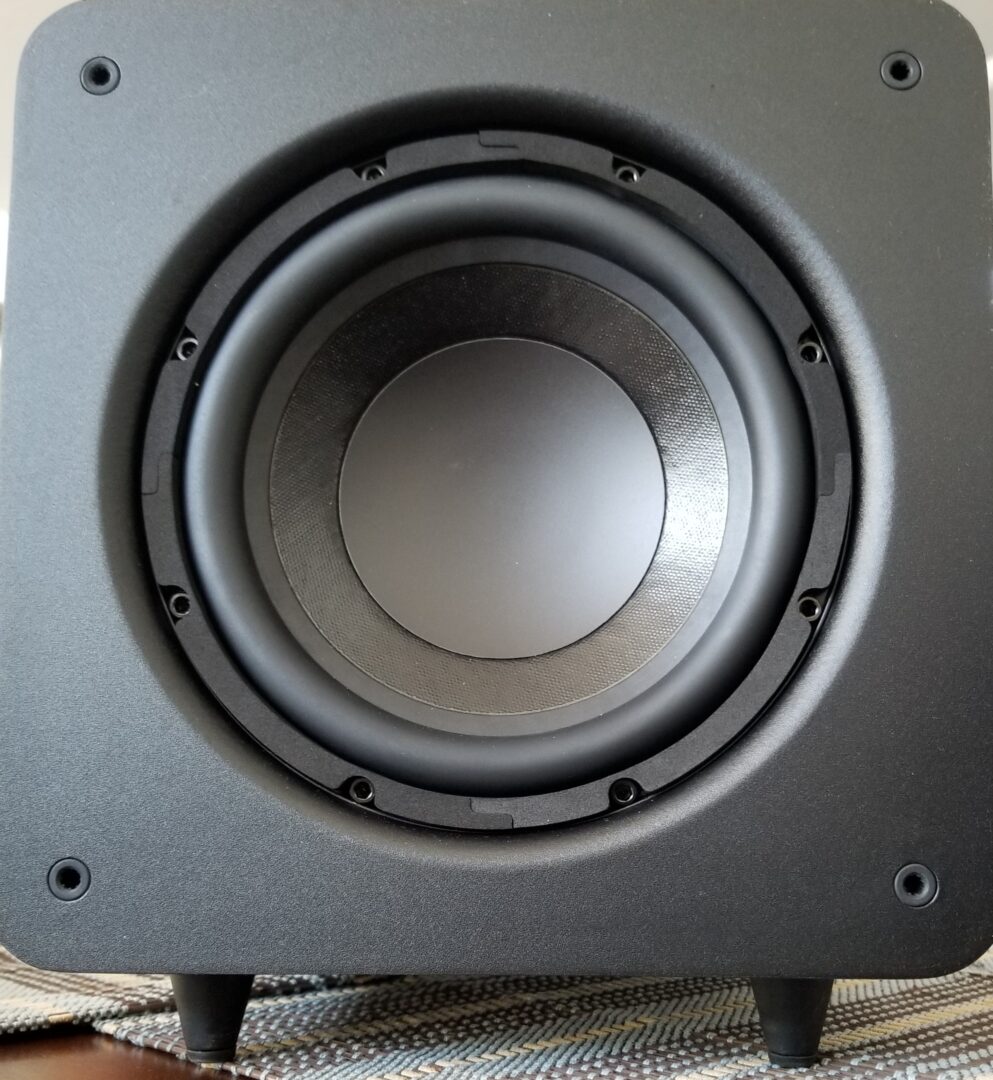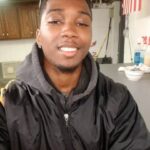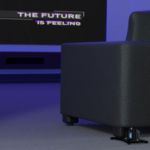How To Decouple A Subwoofer From The Floor (Improve Bass)
How To Decouple A Subwoofer From The Floor (Improve Bass)

You can decouple a subwoofer from the floor by placing it atop a specially designed platform that stops vibrations & bass from traveling through the floor; or by using specialized feet that attach to the bottom of the subwoofer cabinet’s bracing that prevents an over abundance in resonance.
Check Availability Of IsoAcoustics Subwoofer Isolation Stand
Check Availability Of SVS Soundpath Subwoofer Isolation System
Today we’ll cover how to decouple a subwoofer from the floor so that you can still enjoy your bass without having to stress about it rattling the floor.
There’s a lot to get to, so let’s just get right into it.
(After, be sure to check out this helpful guide for the best subs for 2024-2025 with an insight on factors to consider under that)
https://easyhometheater.net/the-best-home-theater-subwoofers
Understanding How Bass Waves Travel
So to provide context to the original question so we understand why it’s important, it’s important to first understand how sound waves & bass waves actually travel.
Sound waves peak and dip in the energy they produce, causing any surface they interact with to resonate parallel to the wave itself.
They’re known as what’s called longitudinal waves.
To put it in more simple terms, whatever surface a sound wave interacts with, that surface will then attempt to resist the change in pressure by moving back and forth with it.
Make sense so far?
Well here’s the thing; depending on the frequency, this may not happen with higher frequencies since they may reflect or be absorbed more or less (again depending on that particular frequency)
Since humans are more sensitive to higher frequency sounds on average, it’s actually easier for us to hear them when we’re in the same space as that source.
However at the same time, they may be absorbed easier (depending on the material) since higher frequencies don’t have as much energy.
On the other hand low frequencies (bass waves) can do this easier since there’s a lot more energy that they have plus the fact that travel in every direction.
Combining all of these things, that means bass waves have the potential to be much more audible outside your space even if you don’t want them to be due to the simple fact that they just have more energy and travel way farther.
This is an oversimplification of course since audio & sound theory can get very complicated very quickly, and there’s lots of variables that can change things.
Of course proper subwoofer placement is important too, but decoupling can be a crucial part when it comes to the subwoofer’s installation and bass you experience.
What Does Decoupling A Subwoofer Mean?
Decoupling, to put it simply, is basically separating your subwoofer’s cabinet from the floor so that those bass waves it emits doesn’t travel through the floor and walls.
A good portion of subwoofers often come with feet attached at the bottom to separate the cabinet from the floor, though in saying that I’ve noticed that they sometimes don’t prevent these waves from traveling which can affect sound quality.
However proper decoupling is much more efficient and can have a number of advantages with regards to audio quality.
What Are The Benefits Of Decoupling A Subwoofer?
Reduction In External Noise
One of the major reasons why someone would want to decouple their sub in the first place is it help prevent unwanted bass from leaking outside the room.
Because the cabinet isn’t in contact with the floor, the bass waves can’t travel as well, basically acting as a way to sort of contain the bass output to that space.
This is great for those who want to enjoy a quality surround sound experience without it being a bother.
There of course exist a bunch of additional variables that can influence this like materials in the room, the type of walls and their thickness, etc, but the main reason usually boils down to this.
Improvement In The Quality Of The Bass
Another interesting benefit that decoupling your sub can have is it can actually have an impact on your overall bass quality.
Because proper decoupling focuses on reducing the vibrations that may travel through the floor and everywhere else, it has the potential to also reduce any additional noise that isn’t the bass your subwoofer’s driver is outputting.
The result of that could be a smoother & tighter bass with your content.
It can also help with taming the especially powerful subwoofers that can physically shake things and cause the room to resonate.
Even when using 2 subwoofers, decoupling can help level out the amount of bass in the room so there isn’t as many peaks which can cause things to sound boomy.
Of course your seating in a room will have a direct affect on this too, but in general, decoupling may be helpful in that aspect.
It can also help with any phase issues.
What is phase on a subwoofer?
Basically it’s a way to add a delay to the output of the bass and is often used when the subwoofer sounds out of sync with your speakers.
Long story short, decoupling can help with improving bass quality in a bunch of ways.
How To Decouple A Subwoofer From The Floor?
So how do you actually decouple a subwoofer from the floor then?
Surprisingly it’s a lot easier than you might think.
First, it’s possible to use a platform that’s specifically designed to isolate the subwoofer’s cabinet from the floor.
In general these platforms are an often softer material of some kind with a long solid sheet that sits atop — and this combination can help dampen the potential bass waves that might try to pass through.
They’re pretty easy to use and really only require you placing the subwoofer on top of it.
Check Availability Of IsoAcoustics Subwoofer Isolation Stand
Another way to decouple your subwoofer is using specialized feet that attach to the bottom of your subwoofer’s bracing that may help to prevent an over abundance in resonance from it.
In other words, it can basically help reduce the bass that travels through the floor.
That in turn can have a positive effect on the bass you experience from your subwoofer depending on the room.
Check Availability Of SVS Soundpath Subwoofer Isolation System
That being said, besides decoupling, there are actually few additional ways you prevent your bass from leaking the room and optimizing the bass itself.
Other Ways To Prevent Bass & Sound Leakage
Implementing Acoustic Panels & Soundproofing
I’ve talked about the benefits of using acoustic panels before, but basically acoustic panels are small foam or fiberglass panels that help absorb vibrations in a room.
This can improve sound quality since any unwanted reflections of sound waves are reduced.
However when used in conjunction with soundproofing, you can actually prevent the sound from leaving the room all together.
Now there are many ways to soundproof a space, so here’s an article that details the things involved in that process.
https://www.homedepot.com/c/ah/how-to-soundproof-a-room/9ba683603be9fa5395fab9089dadf23
Utilizing The High Pass Filter In Your Receiver
Another way to tame unruly bass is utilizing the high pass filter in your receiver.
A high pass filter is basically an electronic internal part in the receiver that gets rid of a certain frequency depending on what it’s set at.
It almost acts like a sort of EQ in a way
It might be under a different name in your receiver like room gain compensation or something similar, but the general idea is that by using this setting, it can help get rid of any excess bass that might be muddying your sound.
Securing Objects In The Room To Prevent Rattling
Another thing that might be helpful is securing objects in the room.
Things like speakers on a table, decorations hanging on a wall, etc can begin to rattle at higher volumes and that can have a negative impact on your sound quality.
Luckily, there’s various ways to achieve this such as using stands for your speakers and sticky tack adhesive for smaller loose decorations or pictures that might make noise.
Using A Bass Shaker
Another option is forgoing a subwoofer all together, but still enjoying the tactile experience that a subwoofer offers by using what’s called a bass shaker.
A bass shaker is a small device that attaches to your seating, and when a scene containing bass happens on screen, it provides a haptic experience you can feel.
This makes the experience much more immersive.
The benefit of this is that only you experience it, so for the more noise conscious when it comes to bass output, this can be a good option too.
Final Thoughts
In summation, decoupling your subwoofer can have various benefits including improvements in bass quality and a dramatic reduction in how much bass travels through walls.
When used in combination with the other tips explained in this article like acoustic treatment and/or using a bass shaker, you’ll be able to enjoy your bass in full.
For more on subwoofers specifically along with my top picks for 2024-2025, be sure to check out this guide on that very thing.
https://easyhometheater.net/the-best-home-theater-subwoofers
That’s it for this one though.
Until next time, make it easy, keep it simple!
About Me

Jay
Hey everyone it’s nice to meet you. I'm Jay, writer & founder of the site Easy Home Theater. I've been with this hobby of home entertainment for many years now. I decided to create this site to be a helpful resource, and share everything that I've learned from personal experience with you. I also happen to be a huge gamer, lover of all things tech related, and a major fitness buff (love weightlifting)
Contact: Contact Jay
Facebook: https://www.facebook.com/Easyhometheater/
X: https://x.com/easyhometheater
Pinterest: https://www.pinterest.com/easyhometheater/pins/
Instagram: https://www.instagram.com/easyhometheater/
Followit: https://follow.it/easy-home-theater
Bluesky: https://bsky.app/profile/easyhometheater.bsky.social






Leave a Reply